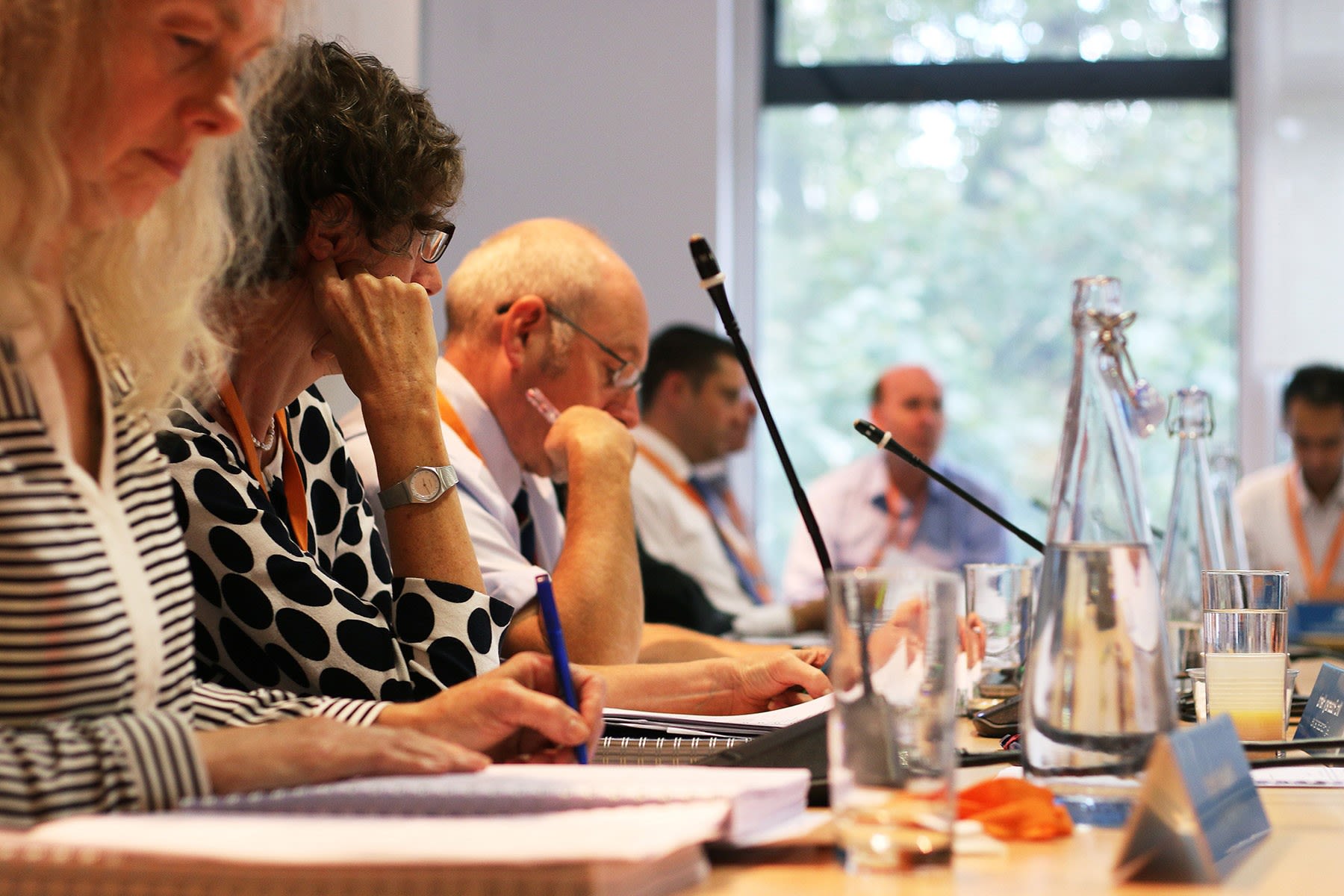Delivering guidance to the NHS at an unprecedented rate

Introduction
In August 2023, we produced guidance, at a faster rate than ever before, on a new medicine for a rare condition.
Through collaboration with stakeholders, we were able to publish draft guidance on a treatment for Pompe disease ahead of it gaining marketing authorisation by the MHRA. This is the first time that such an event has happened in the history of NICE.
In this case study, we show how we were able to produce guidance so swiftly to ensure a promising medicine reached patients fast.
The challenge
Pompe disease is a rare, genetic, chronic and progressive metabolic disease. It results in severe disability and reduces life expectancy.
The disease is caused by mutations in the gene that encodes the enzyme acid alpha-glucosidase (GAA). GAA is needed to break down glycogen into glucose.
In Pompe disease, there is reduced or no GAA activity. As a result, lysosomal glycogen accumulates in muscle cells. This causes irreversible muscle damage.
Late-onset Pompe Disease (LOPD) can occur any time from 12 months up to late adulthood. LOPD typically affects multiple systems. It is characterised by progressive muscle weakness and respiratory problems.

A new treatment for a rare genetic disorder
The existing treatment for LOPD was long-term enzyme replacement therapy (ERT) with alglucosidase alfa or avalglucosidase alfa. Despite the availability of these treatments there remains an unmet need for LOPD patients.
Amicus Therapeutics developed an alternative, additional treatment option for adults with LOPD - cipaglucosidase alfa with miglustat.
Cipaglucosidase alfa in combination with miglustat consists of an intravenous enzyme replacement, cipaglucosidase alfa, with an orally administered enzyme stabiliser, miglustat.
This treatment can be considered for people with newly diagnosed Pompe disease. It can also be considered for people:
- where the condition has not responded to previous treatments
- where previous treatments are not tolerated
- or when peoples’ conditions have worsened clinically after an initial response to standard treatment.
In July 2023, we were able to publish draft guidance on this treatment ahead of it gaining market authorisation in the UK.
We published final guidance that recommended the treatment, in August 2023.

Rapid guidance development through ILAP
One of the reasons that the guidance was issued so quickly, is because it was one of the first medicines that used the Innovative Licensing and Access Pathway (ILAP).
The ILAP is a partnership that aims to streamline patient access to safe, financially sustainable and innovative medicines. It is open to both commercial and non-commercial developers of medicines.
Through the ILAP, manufacturers can engage with key stakeholders early and often in the journey from development to patient access. NICE is a key strategic partner in this work and several of our programmes help us deliver ILAP.
In the case of Cipaglucosidase alfa with miglustat, we could direct the manufacturer to our services that would support the product through the decision process.
“The challenges of developing innovative treatments for people living with rare and very rare diseases highlight the fact that there is a need for a new approach,” says Charlie Galvin, Vice President International Affiliates at Amicus Therapeutics.
She adds: “We have a moral obligation to develop the best medicines and ensure that every person who may benefit has access to them."
“Amicus is dedicated to partnering with the healthcare systems to find new ways of working that will reduce the time to diagnosis and treatment for people living with rare disease."
“ILAP enabled regular and open dialogue with NICE which was crucial in ensuring patients were able to access this medicine as early as possible.”

Refining an economic model so it’s fit for NICE’s standards
To develop guidance on new treatments, NICE gathers evidence from several sources. The main evidence is provided by the manufacturer.
This is then reviewed by an external assessment group, which is an external academic organisation independent of NICE that produces an evidence submission.
NICE Advice provides a range of services to support pharmaceutical and healthtech companies seeking to enter the NHS market.
In their preparations for submitting evidence as part of the appraisal process, Amicus chose to use the NICE Advice health economic model peer review service (previously called PRIMA).
The service provides an independent, critical review and quality assessment of a company’s economic model. It also provides a technical report detailing model optimisation recommendations.


NICE Advice – ensuring evidence models are right first time
For NICE to approve a treatment, the evidence must show that it is both cost and clinically effective.
Simon Shohet, Vice President International Market Access at Amicus Therapeutics, explains: “NICE suggested that we consult with their health economic model peer review service early in the process as part of the ILAP discussions."
“The opportunities and benefits of this consultation proved to be incredibly helpful. NICE Advice offers suggestions on a manufacturer’s draft economic model at an early stage before the full evidence submission has been made."
“We were able to use the learnings from the NICE Advice service to feed into our economic modelling approach and evidence submission.”

Constructive, open dialogue helps speed up process
In this case, NICE Advice identified a potential area of uncertainty around health states. Being a rare disease, there was very little in the literature on health states in adult Pompe disease. The service suggested the draft model ran the risk of oversimplification, which could lead to incorrect outputs.
It questioned whether health state evidence submitted in the draft economic model, adequately captured the clinically relevant areas comprehensively enough. It also called for sources to be justified.
Simon continues: “NICE Advice helped identify areas that could be topics of discussion throughout the appraisal process."
“The NICE Advice team picked up aspects in the economic model that may cause uncertainty before it went through the process. This meant we were able to try to address those uncertainties through additional analyses and clinical consultation in advance."
“Though NICE appoints an independent evidence review group that scrutinises the model and evidence in great detail after submission, we had more confidence that the overall health states framework in the model was reasonable when it came to the appraisal."
“This helped minimise possible delays that could have occurred further down the line.”
“Throughout the process, NICE’s constructive and open dialogue allowed us to move forward, and do so quickly.”

Find out more
NICE guidance on Cipaglucosidase alfa with miglustat for treating late-onset Pompe disease
The Innovative Licensing and Access Pathway
NICE Advice service – a support service for pharmaceutical and healthtech companies seeking to enter the NHS market.
This case study was developed by NICE. Amicus Therapeutics has reviewed the case study for factual accuracy.